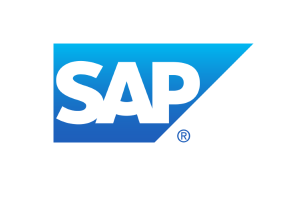Published on the 17/03/2014 | Written by SAP

AT A GLANCE
- George Weston Foods
INDUSTRY
- Agribusiness
BUSINESS OBJECTIVE
- Improve grower registration
- Upgrade general administration and processing
- Better position reporting for grain procurement
SOLUTION
- SAP Global Trade Management (GTM)
THE BENEFITS
- A successful Australia industry-first deployment of the SAP Global Trade Management (GTM) system
- Standardised harvest contracts
- Back-office admin minimised
- Position reporting no more than 24 hours old
- Increased accuracy and time savings led to better harvest-time results
FOR MORE INFORMATION
SAP
P: 1800 287 727
E: info.australia@sap.com
E: info.newzealand@sap.com
W: www.sap.com/australia
In an industry first, an implementation of SAP Global Trade Management helped major food manufacturer George Weston Foods gain the visibility it required to manage its busy harvest period…
As one of Australia and New Zealand’s largest food manufacturers, employing around 8000 employees in around 60 sites, George Weston Foods (GWF) produces some of these countries’ best-known household bread and smallgoods brands, with other divisions including flour and milling, food service, and cakes and ingredients.
Following the global financial crisis, many large agri-sector players shifted their focus to risk management, and with the majority already using SAP for their back office functions, demand increased to expand the SAP footprint to address core business operational activities and functions unique to the industry.
The milling division of GWF identified three pain points to be addressed through a system upgrade – grower registration, general administration and processing, and position reporting for grain procurement. NTT DATA Business Solutions (formerly Extend Technologies) was engaged as the implementation partner on the project, and according to Brian Dickinson, business development manager for mining and agribusiness at NTT DATA Business Solutions, the initial business case revealed the need to undertake a two-stage project – which was labelled Project Novocain.
Implementation and challenges
The first phase of the project, was focused on fixing some of the problems in the milling division’s existing SAP environment, which had been installed more than a decade earlier.
This included adding front-end components such as the National Grower Registry interface, which provided a means to automate validation of grower registers and updating the SAP vendor master data with the grower details.
While the team hit some unexpected integration issues, the changes made in phase one were up and running in time for the harvest period that year – a critical and very busy time for the GWF milling business.
The team moved onto phase two, which involved removing the back-end legacy system, and replacing it with a more standard SAP engine in SAP Global Trade Management (GTM), an orchestration management solution.
While the solution has been widely used in the oil and gas industry, it had not been successfully implemented for commodities in Australia before.
“We decided to keep the solution to all standard SAP tools, so we built it with a Web Dynpro front end. This exists outside of the GTM solution, but still within SAP, and then orchestrates through GTM into the SAP back-end.
Ultimately, it looks like standard sales and distribution (SD) and material management (MM) contracts, but they are all done through the GTM engine,” Dickinson says.
The system allows around a dozen different grain procurement contract types to be captured, ranging from ‘track’ through to some grower-specific type contracts such as ‘hectare’ and ‘variety’. These, for example, allow buyers to contract growers for specific varieties and tonnages with an estimated yield factor, from which the total tonnage is calculated. The solution automatically generates the formatted contract in PDF and automatically forwards it to the relevant counter-party through the appropriate communications channel.
Another aspect of the implementation concerned the process of grain deliveries – or ‘tickets’, as they are known.
“The Australian market is fairly unique in the fact that it is not just tickets to their own mills, they are also receipted at third parties such as the bulk handlers,” Dickinson says. “The solution provides for a ticket upload program which processes external electronic files which accommodates all the major Australian bulk handlers and provides a mapping component for GWF to map their own formats and changes in the future.”
This includes a front-end error correction procedure.
“All tickets process through GTM and are automatically matched against the relevant contract. The transactions then flow through automatically to update inventories and process vendor payments based on the agreed contracted terms,” Dickinson says. “Likewise, when a contact is struck, the contract pricing is automatically populated, including all deductions, freight estimates and levies such that the ‘delivered to mill price’ is known at the time of writing the contract. We are also incorporating in the latest release unpriced contracts with pricing generated through an automatic feed from the Chicago Board of Trade.”
Another key component of the project was position reporting. For GWF, the harvest period – from October to January each year – is a crucial period, as it receives the majority of deliveries during this time.
“Depending on their purchasing strategy, they may have decided going into the harvest that they would purchase 50 percent of their stock through contracts, and maybe the other 50 percent would be purchased through the spot market. So they need to know what their position is – what their demand is, what they currently have contracted, what they have delivered and what their exposures are, so their position reporting becomes absolutely critical,” says Dickinson.
Previously, because the administration was largely manual, simple things like pricing changes to tickets, such as updated storage and handling charges would have to be manually looked up, calculated and re-entered. The manual processing was causing a significant backlog in ticket processing during the harvest, resulting in the position report being several weeks out of date – meaning they were essentially flying blind.
“Now all those pricing conditions are set up and automatically applied, including changes, so there is minimal to no administration required to process all those tickets,” Dickinson says.
From a reporting perspective, the data is now fed into SAP Business Warehouse, and the position report is created using Portal and some Business Explorer reports. These improvements mean that the position report now accurately indicates their procurement position and at most is 24 hours behind.
With phase two of the project kicking off in April, the team faced a challenging timeline to have the system ready to go live for the harvest period beginning in October. In addition to these tight timeframes, the company was also undergoing a number of other changes concurrently, therefore requiring very hands-on management to implement a brand-new solution on time.
Dickinson attributes a large part of the project’s success to the Steering Committee, led by executive sponsor Hugh Robertson.
“The Steering Committee was certainly empowered very well, a credit to the GWF management” Dickinson says.
Business benefits
Among the critical success factors for Project Novocain was having contracts standardised ready for the harvest. By formalising their business rules and terms and conditions through these contracts, some of the discretionary elements would be removed from buying negotiations, resulting in more consistent contracts across the business.
Another was being able to minimise the number of back office administration staff required, which automation of previously manual processes delivered. And just how essential having up-to-date information on procurement is for a business like GWF was demonstrated during the project itself, according to Dickinson, when commodity prices shifted $60-80 overnight.
“That change is significant, and represents tens of millions of dollars for an organisation such as GWF, hence the why position reporting is so critical,” he says.
FURTHER READING
About This Vendor
More Case Studies

Chorus transforms billing engine
Partnership with Zag delivers a fit-for-purpose billing system, independent from Spark…

Ballance Agri-Nutrients maps path to increased revenue
Driving business performance and sustainability on the connected farm…

Road mapping the way to digital transformation
Two years into executing its digital roadmap, Ballance Agri-Nutrients is globally recognised with the ‘Best Run’ SAP Innovation Award…

Choosing a future-proofed foundation for growth
Improving system performance and production planning in forestry with SAP HANA and Cloud…

How DOC mobilised their in-the-field asset management
DOC has become the first to implement BlueWorx, a world-class Mobile Asset Management solution by Zag, taking them a step closer to making New Zealand the greatest living space on earth…




























